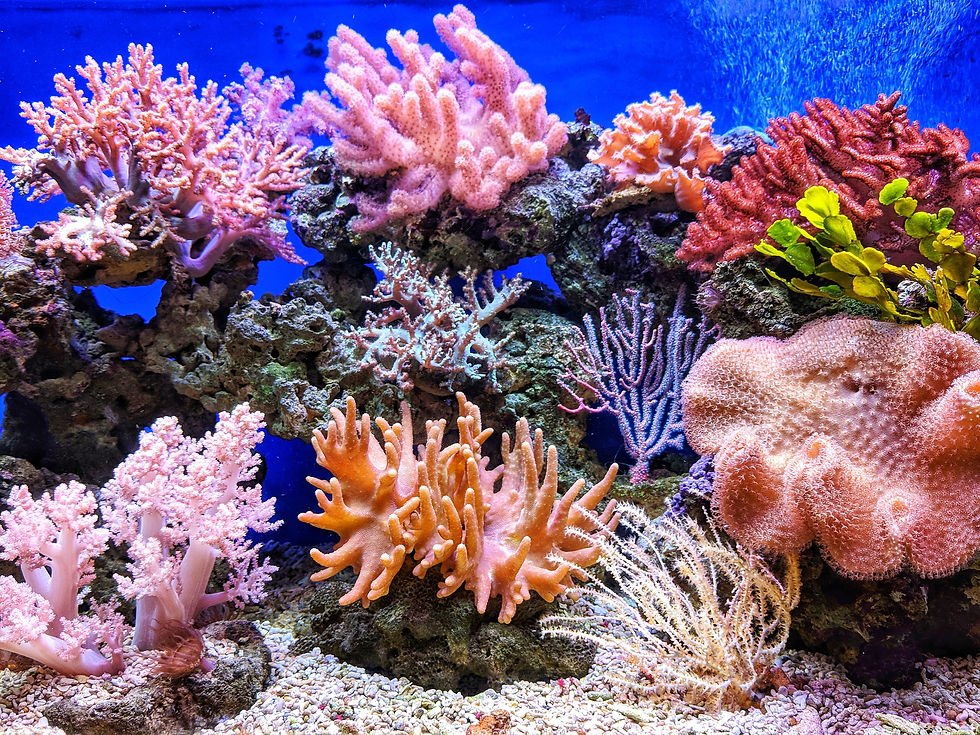The Impact of a Summer Splash: Swimwear is Destroying our Oceans
- Molly Hardwick

- Jun 21, 2021
- 3 min read
Updated: Aug 16, 2021
As we head towards swimwear season, we may already be browsing for current summer trends which would suit us and have us looking our best on the beach. Refreshing the swimwear page of all the fashion brands, we may be excited to spend money on new bikinis and costumes to give us that summer feeling.
Pause.
Our ever-growing collection of swimwear has a detrimental impact on the oceans that we pose by.
Why is swimwear the issue?
Swimwear, most commonly worn in the spring/summer season, is usually made of materials such as nylon, polyester, and polypropylene. Ideal materials for swimwear, as they’re stretchy and fit the body well.
However, these very materials are plastic based and cause a great deal of plastic damage to our oceans – contributing to the at least eight million tons of plastic which end up in our oceans every year, making up 80% of all marine debris from surface waters to deep-sea sediments. In fact, even the microfibres in swimwear cause a great deal of harm to oceanic conditions, harming sea life:
“When you put items of clothing into the washing machine, thousands upon thousands of fibres come from the item of clothing and travel through sewerage and storm water and end up in the environment.” – Dr Mark Browne, Professor of Ecology at UNSW
But… we need to wear swimwear?
The difficulty of swimwear is, of course, there’s not much else like it. A swimsuit is the most practical option for activities in water, and an old t-shirt repurposed as a costume doesn’t always suffice. As with many environmental issues in the fashion industry, fast fashion is largely to blame for our consumption of swimwear.
As swimwear becomes led by trends, it’s not about practicality, it’s about trends. This is why we have even seen brands advise consumers not to wear their swimwear in water, since it is meant for poolside lounging only.
Understandably, we want swimwear we look good in. But with this type of trendy swimwear, we can’t get multiple uses out of it. We can’t wear it both to swim and to sunbathe on multiple trips, so it seems wasteful in both an environmental and economic sense. We need to ask ourselves; do we need this type of swimwear?
What are our options?
One of the main things we can do, as consumers, is to stop consuming so much stuff. The world now consumes 80 billion new pieces of clothing every year. As we buy swimwear for our summer plans, we can consciously chose to spend our cash on a swimsuit we can get multiple wears out of – at the beach, pool, a leisure centre.
That might mean opting for a more classic rather than trendy look. We can consider wearing one swimsuit a few times in one trip, rather than feeling the need to over consume whilst packing for our summer holidays.
Alternatively, we can be mindful of the swimwear brands which we’re supporting. Opting for brands who are trying lead a more sustainable approach is massively helpful. Brands like Holiday Romance and Davy J are aiming to make the spring/summer season less destructive to our oceans, using materials like econyl, a fabric used to replace traditional nylon and created entirely from recycled plastic waste such as used fishing nets and textiles.
Make a change this summer
We can all make small changes to aim to not consume so much this summer. That could look like limiting spends on fast fashion brands, or reusing the swimwear which has never failed you before. You could also repurpose a piece you already own, turning a one piece into a two piece, for instance. There are also so many tricks and tips online of how to switch up the style of swimwear.
While making summer purchases, weigh up how much use you will get out of a particular piece. If you’re not able to enter the water in it, it’s probably not worth it. Always, if possible, support the sustainable brands trying to change the approach to summer fashion.
Since our oceans are there to be enjoyed during the warmer months, we should work to ensure we can enjoy them for many more summer seasons.



Comments